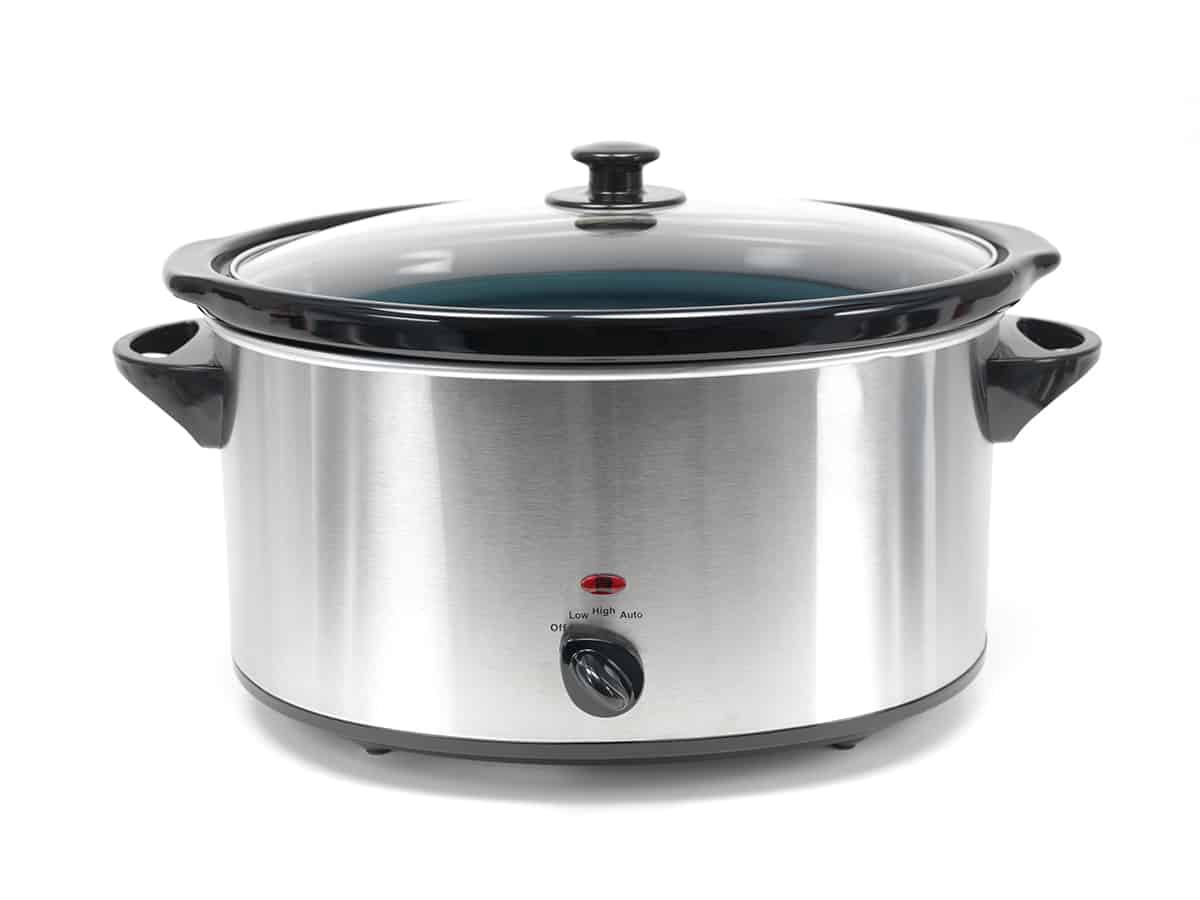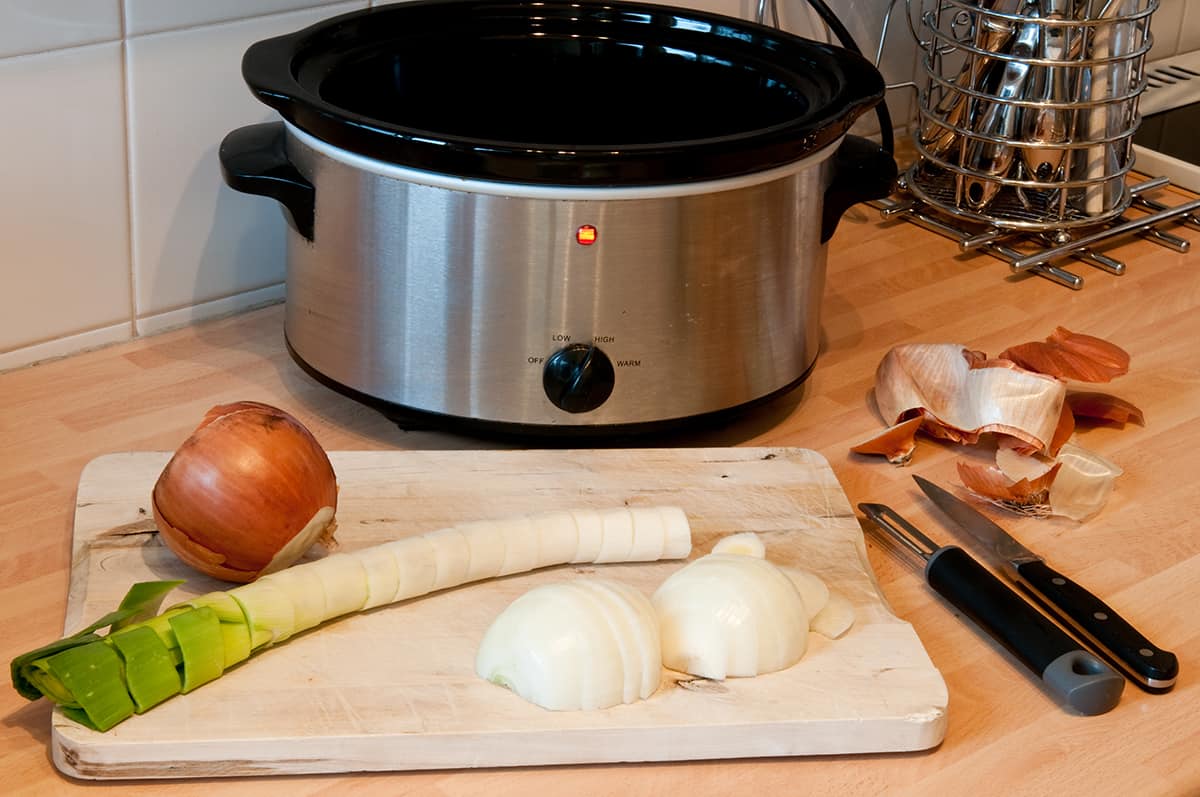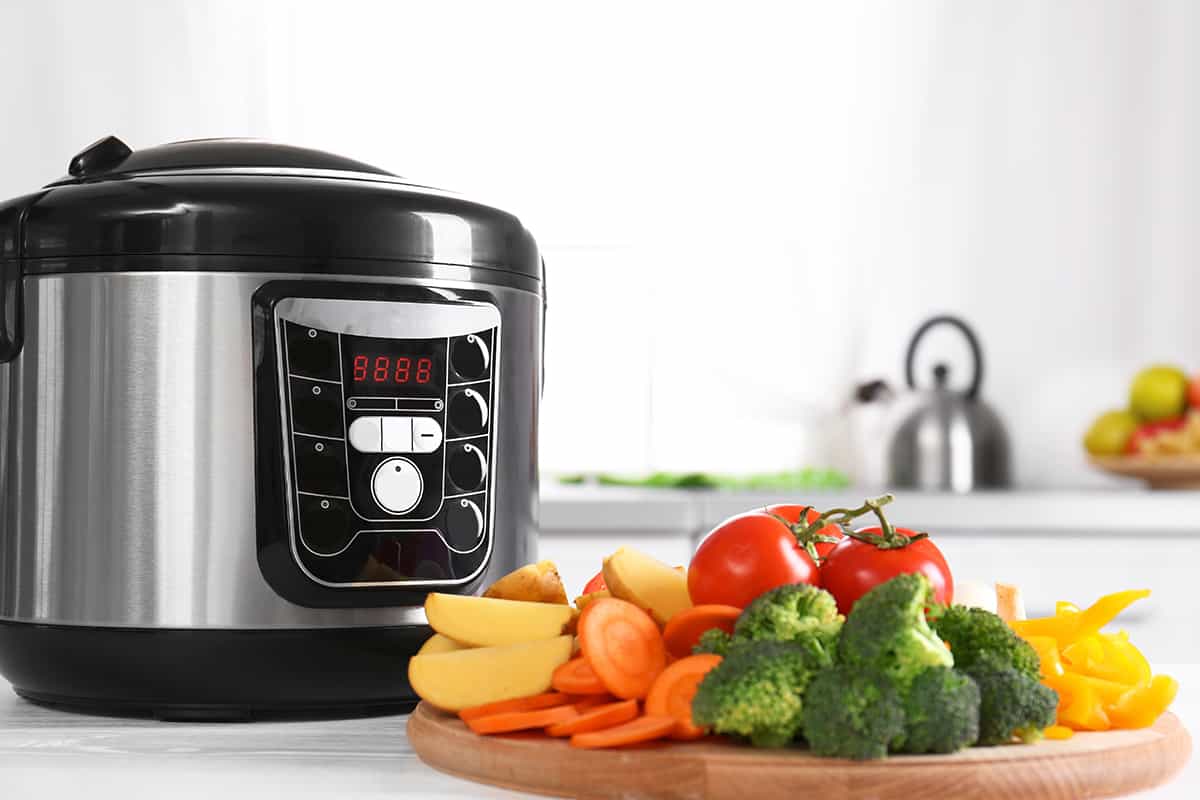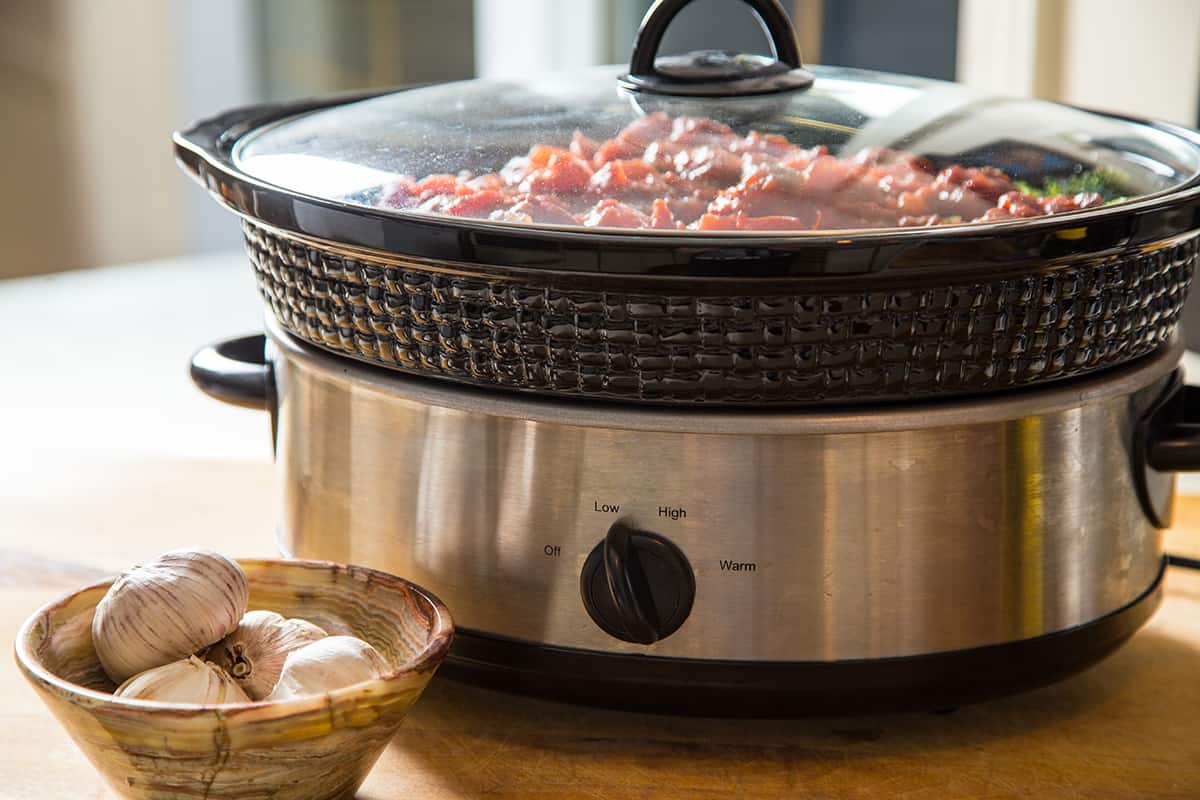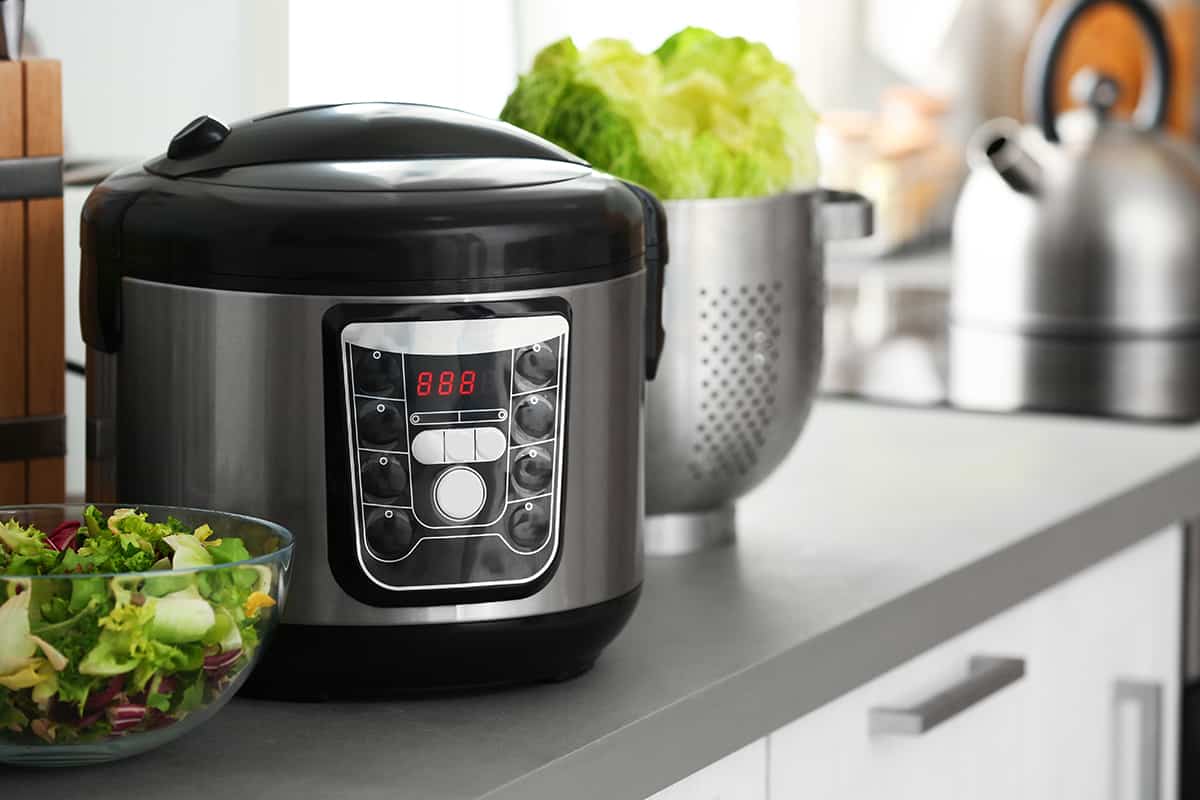Slow cookers, often hailed as the ‘set-it-and-forget-it’ miracle of modern kitchens, come in a variety of sizes to cater to different culinary needs. Much like selecting the appropriate car engine size based on driving habits and passenger load, choosing the right slow cooker size can significantly affect your cooking experience.
From compact units perfect for a cozy meal for two to larger models designed for hearty family feasts or social gatherings, the size of the slow cooker plays a pivotal role in efficient meal prep.
Slow cookers are typically available in these standard sizes:
- Compact: 1.5-3 quarts
- Medium: 4-5 quarts
- Large: 6-7 quarts
- Extra-Large: 8-10 quarts
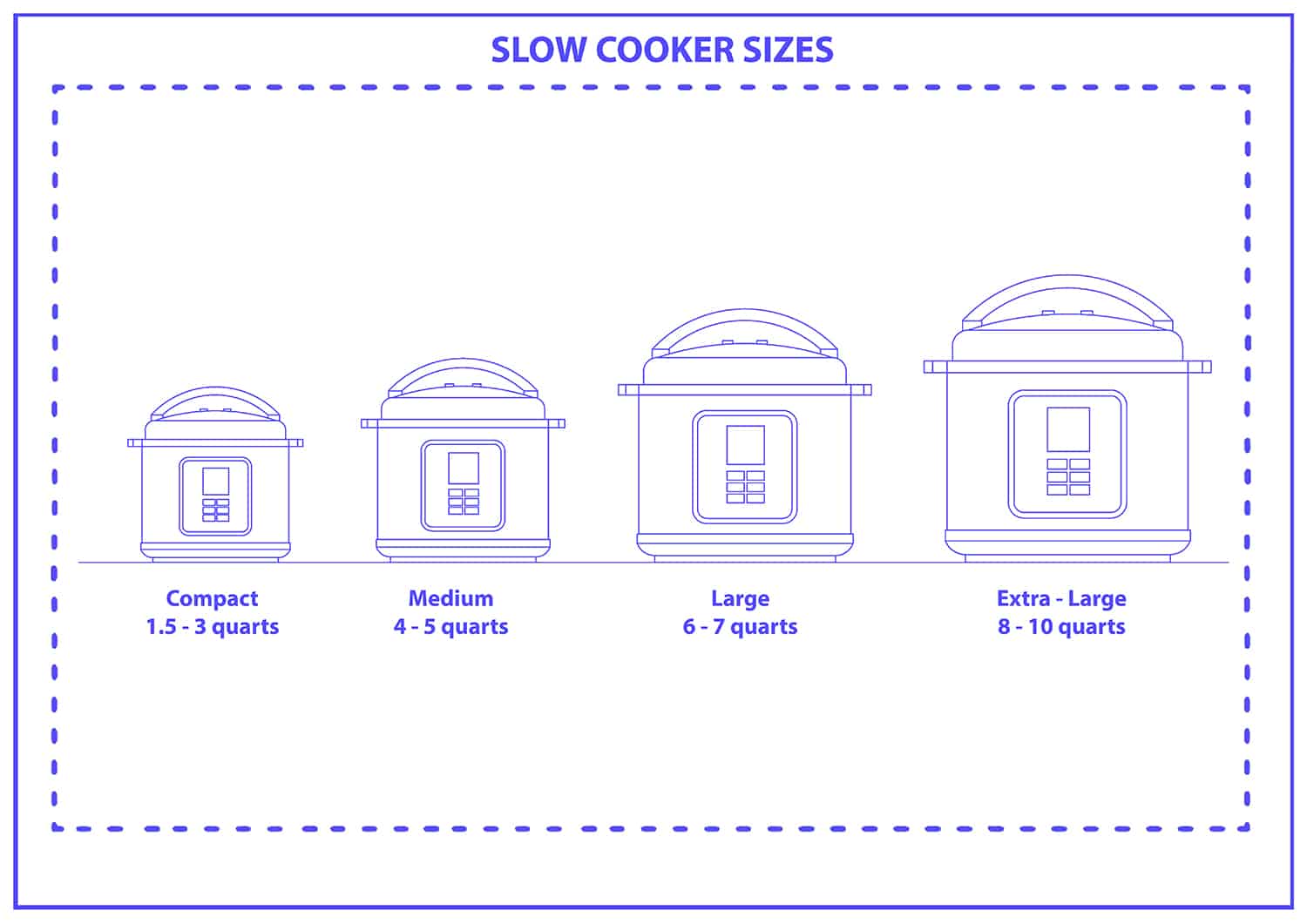
In this guide, we will learn about the intricacies of slow cooker sizes, helping you understand their impacts on cooking and how to choose the perfect fit for your kitchen.
Understanding Slow Cooker Sizes
In the kitchen, the size of a slow cooker is extremely important. Its capacity influences how you plan meals, how efficiently you can cook, and how much food you can prepare at once. Let’s examine the role of slow cooker sizes.
How Size Impacts Cooking
The capacity of a slow cooker significantly affects its performance:
Too Small: A slow cooker that’s too small may cause overflows and improperly cooked food. It might not be able to accommodate your recipe either.
Too Large: An excessively large slow cooker can lead to undercooking, as the excess space influences the appliance’s ability to maintain the correct temperature.
Just Right: The optimal slow cooker size ensures efficient and effective cooking, maintaining even heat distribution and ensuring optimal flavor.
What Does Quart Size Mean in Slow Cookers
The quart size in a slow cooker refers to its total capacity. It’s important to note that slow cookers function best when filled between half and three-quarters of the way.
For instance, a 3-quart slow cooker can hold a recipe that yields about 3 quarts of food. However, due to the recommended fill level, it would ideally cook about 1.5 to 2.25 quarts of food effectively. A 6-quart slow cooker, while able to hold 6 quarts, performs best with 3 to 4.5 quarts of food inside.
Choosing the Right Size Slow Cooker
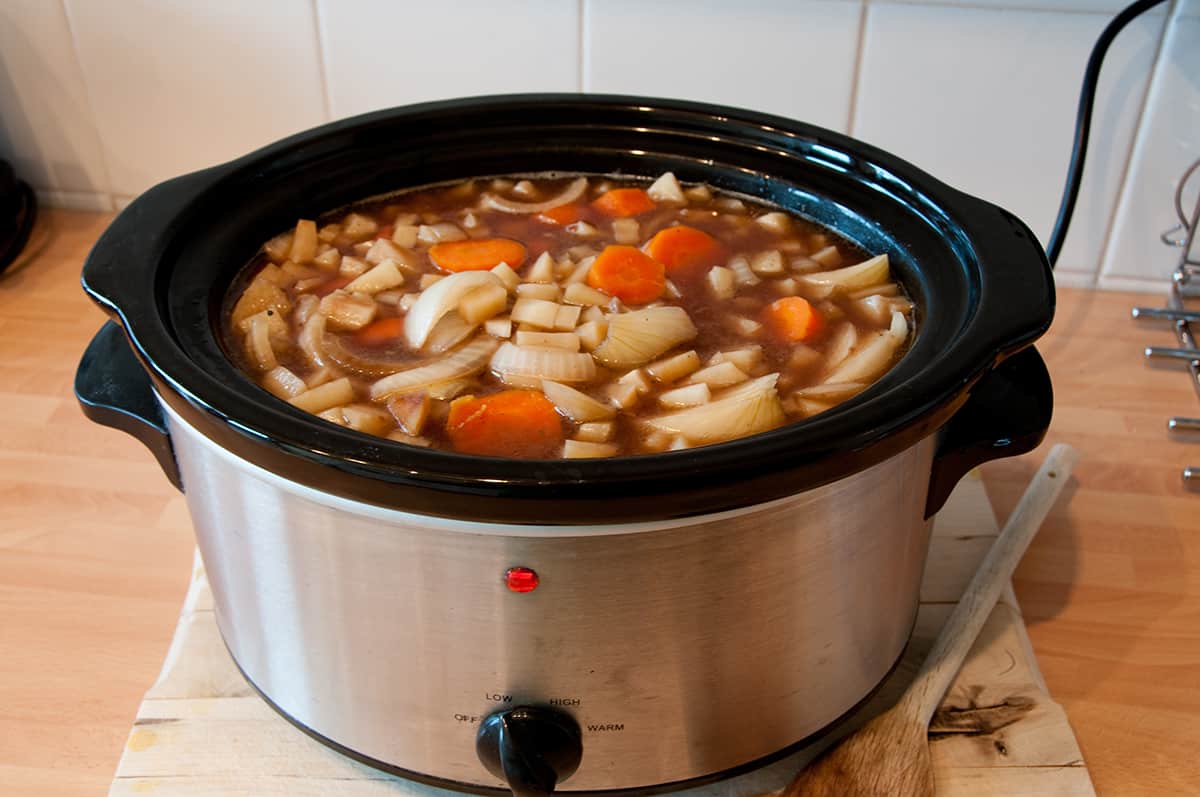
Picking the right size slow cooker can be compared to choosing a car with an engine size that’s appropriate for your driving needs. Here’s how to select the perfect slow cooker for various situations.
How to Determine the Right Slow Cooker Size for Singles/Couples
A small slow cooker between 1.5 and 3 quarts is typically sufficient for individuals or couples who mainly cook for themselves. This size range is compact, making it a perfect fit for smaller kitchens or minimal countertop space.
A smaller slow cooker can perfectly accommodate meals such as soups, stews, small roasts, or casseroles for one to two people. It’s also a great choice if you prepare dips or sauces requiring slow, consistent heating.
Best Slow Cooker Sizes for Small Families
Families of 3-4 people should consider medium-sized slow cookers in the 4 to 5-quart range. This size offers enough room to cook larger dishes without the risk of overflowing, much like a mid-sized car provides adequate space for a small family.
These medium-sized slow cookers are perfect for preparing a whole chicken, larger cuts of meat, or generous portions of soups, stews, and casseroles. It’s an excellent option for those who prefer to have leftovers for the following day.
Ideal Slow Cooker Sizes for Large Families or Group Gatherings
If you often cook for large families or group gatherings, a large slow cooker between 6 and 7 quarts is a good choice. This size allows you to prepare meals on a larger scale.
These slow cookers can accommodate large roasts, whole poultry, and significant quantities of soups, stews, or casseroles. If you regularly host parties or love making meals in bulk for freezing, these sizes would be beneficial.
Slow Cooker Sizes for Batch Cooking and Meal Prep
For batch cooking, meal prep, or catering, you may need an extra-large slow cooker in the 8 to 10-quart range. These slow cookers can prepare enormous quantities of food simultaneously, equivalent to how transport trucks carry a substantial load.
With these sizes, you can make large quantities of soups, stews, chili, or cook large cuts of meat effortlessly. They’re also great for making stock or broth in bulk.
Other Factors to Consider When Choosing a Slow Cooker
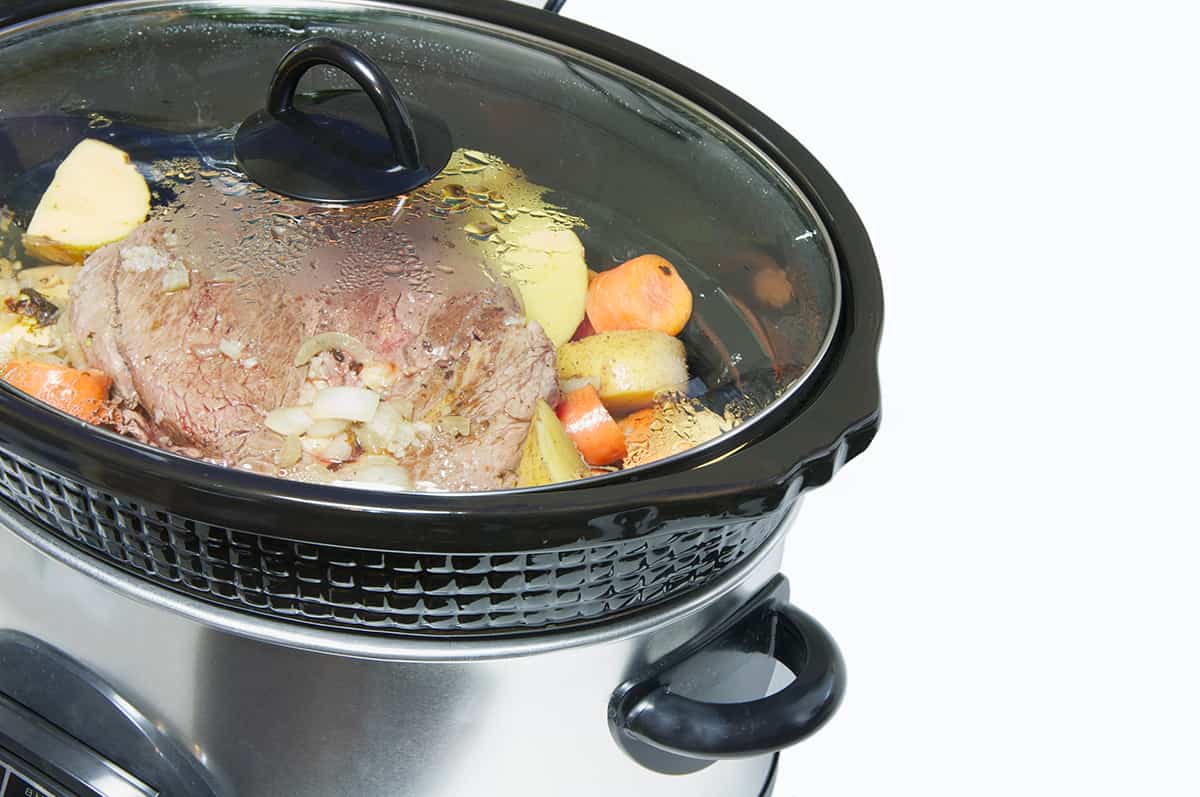
Choosing a slow cooker isn’t solely about size. Several other factors can influence your cooking experience and should be considered during selection.
Heat Settings
A quality slow cooker should have at least two heat settings: low and high. These settings offer flexibility in cooking times. Some models also include a “keep warm” function, which is beneficial for maintaining your food at a safe temperature once cooking is complete.
Timer Function
A timer can be a helpful feature, especially for those with a busy schedule. Some slow cookers have built-in timers that automatically switch to the “keep warm” setting after the set cooking time. This feature allows you to start your slow cooker in the morning and return to a perfectly cooked meal that hasn’t been overcooked.
Shape
Slow cookers come in round or oval shapes. Oval slow cookers are more versatile as they can better accommodate large pieces of meat or poultry, while round slow cookers work well for soups, stews, and smaller dishes.
Removable Insert
Look for slow cookers with a removable insert, as it can make cleaning easier. Some inserts are also oven and stovetop-safe, allowing for greater flexibility in your cooking.
Lid Material
The lid material can impact cooking and heat retention. Glass lids allow you to check on your food without lifting the lid and losing heat, while solid lids may offer better heat retention. Some slow cookers even have hinged lids for easy access.
